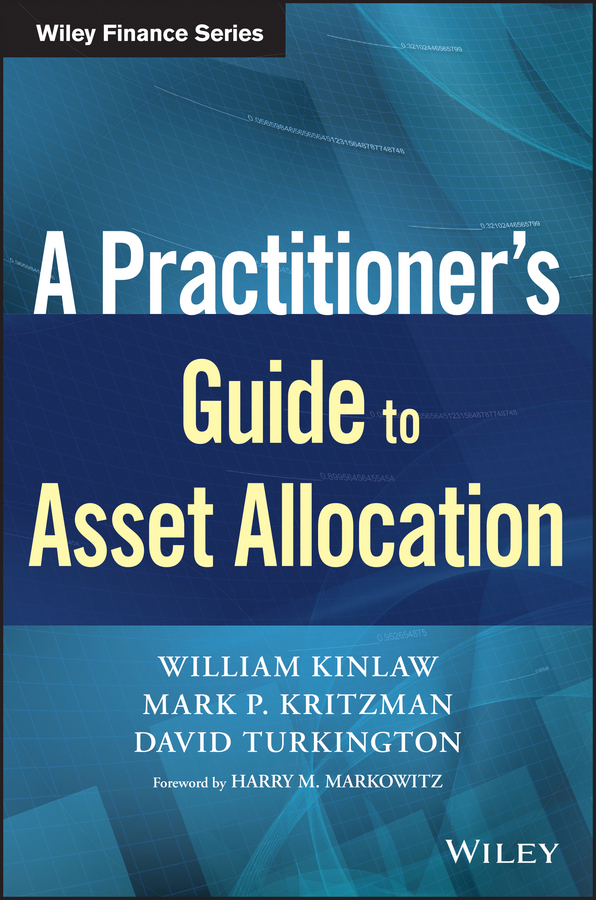Электронная книга: William Kinlaw «A Practitioner's Guide to Asset Allocation»

|
Since the formalization of asset allocation in 1952 with the publication of Portfolio Selection by Harry Markowitz, there have been great strides made to enhance the application of this groundbreaking theory. However, progress has been uneven. It has been punctuated with instances of misleading research, which has contributed to the stubborn persistence of certain fallacies about asset allocation. A Practitioner's Guide to Asset Allocation fills a void in the literature by offering a hands-on resource that describes the many important innovations that address key challenges to asset allocation and dispels common fallacies about asset allocation. The authors cover the fundamentals of asset allocation, including a discussion of the attributes that qualify a group of securities as an asset class and a detailed description of the conventional application of mean-variance analysis to asset allocation.. The authors review a number of common fallacies about asset allocation and dispel these misconceptions with logic or hard evidence. The fallacies debunked include such notions as: asset allocation determines more than 90% of investment performance; time diversifies risk; optimization is hypersensitive to estimation error; factors provide greater diversification than assets and are more effective at reducing noise; and that equally weighted portfolios perform more reliably out of sample than optimized portfolios. A Practitioner's Guide to Asset Allocation also explores the innovations that address key challenges to asset allocation and presents an alternative optimization procedure to address the idea that some investors have complex preferences and returns may not be elliptically distributed. Among the challenges highlighted, the authors explain how to overcome inefficiencies that result from constraints by expanding the optimization objective function to incorporate absolute and relative goals simultaneously. The text also explores the challenge of currency risk, describes how to use shadow assets and liabilities to unify liquidity with expected return and risk, and shows how to evaluate alternative asset mixes by assessing exposure to loss throughout the investment horizon based on regime-dependent risk. This practical text contains an illustrative example of asset allocation which is used to demonstrate the impact of the innovations described throughout the book. In addition, the book includes supplemental material that summarizes the key takeaways and includes information on relevant statistical and theoretical concepts, as well as a comprehensive glossary of terms. Издательство: "John Wiley&Sons Limited (USD)"
ISBN: 9781119402428 электронная книга Купить за 2598.33 руб и скачать на Litres |
Другие книги схожей тематики:
| Автор | Книга | Описание | Год | Цена | Тип книги |
|---|---|---|---|---|---|
| Wesley R. Gray | Quantitative Momentum. A Practitioner's Guide to Building a Momentum-Based Stock Selection System | The individual investor's comprehensive guide to momentum investing Quantitative Momentum brings momentum investing out of Wall Street and into the hands of individual investors. In his last book… — John Wiley&Sons Limited (USD), электронная книга Подробнее... | 2273.13 | электронная книга |
См. также в других словарях:
Valuation (finance) — Accountancy Key concepts Accountant · Accounting period · Bookkeeping · Cash and accrual basis · Cash flow management · Chart of accounts … Wikipedia
Real options valuation — Real options valuation, also often termed Real options analysis,[1] (ROV or ROA) applies option valuation techniques to capital budgeting decisions.[2] A real option itself, is the right but not the obligation to undertake some business decision; … Wikipedia
china — /chuy neuh/, n. 1. a translucent ceramic material, biscuit fired at a high temperature, its glaze fired at a low temperature. 2. any porcelain ware. 3. plates, cups, saucers, etc., collectively. 4. figurines made of porcelain or ceramic material … Universalium
China — /chuy neuh/, n. 1. People s Republic of, a country in E Asia. 1,221,591,778; 3,691,502 sq. mi. (9,560,990 sq. km). Cap.: Beijing. 2. Republic of. Also called Nationalist China. a republic consisting mainly of the island of Taiwan off the SE coast … Universalium
United Kingdom — a kingdom in NW Europe, consisting of Great Britain and Northern Ireland: formerly comprising Great Britain and Ireland 1801 1922. 58,610,182; 94,242 sq. mi. (244,100 sq. km). Cap.: London. Abbr.: U.K. Official name, United Kingdom of Great… … Universalium
Socialized medicine — is a term used to describe a system for providing medical and hospital care for all at a nominal cost by means of government regulation of health services and subsidies derived from taxation.[1] It is used primarily and usually pejoratively in… … Wikipedia
